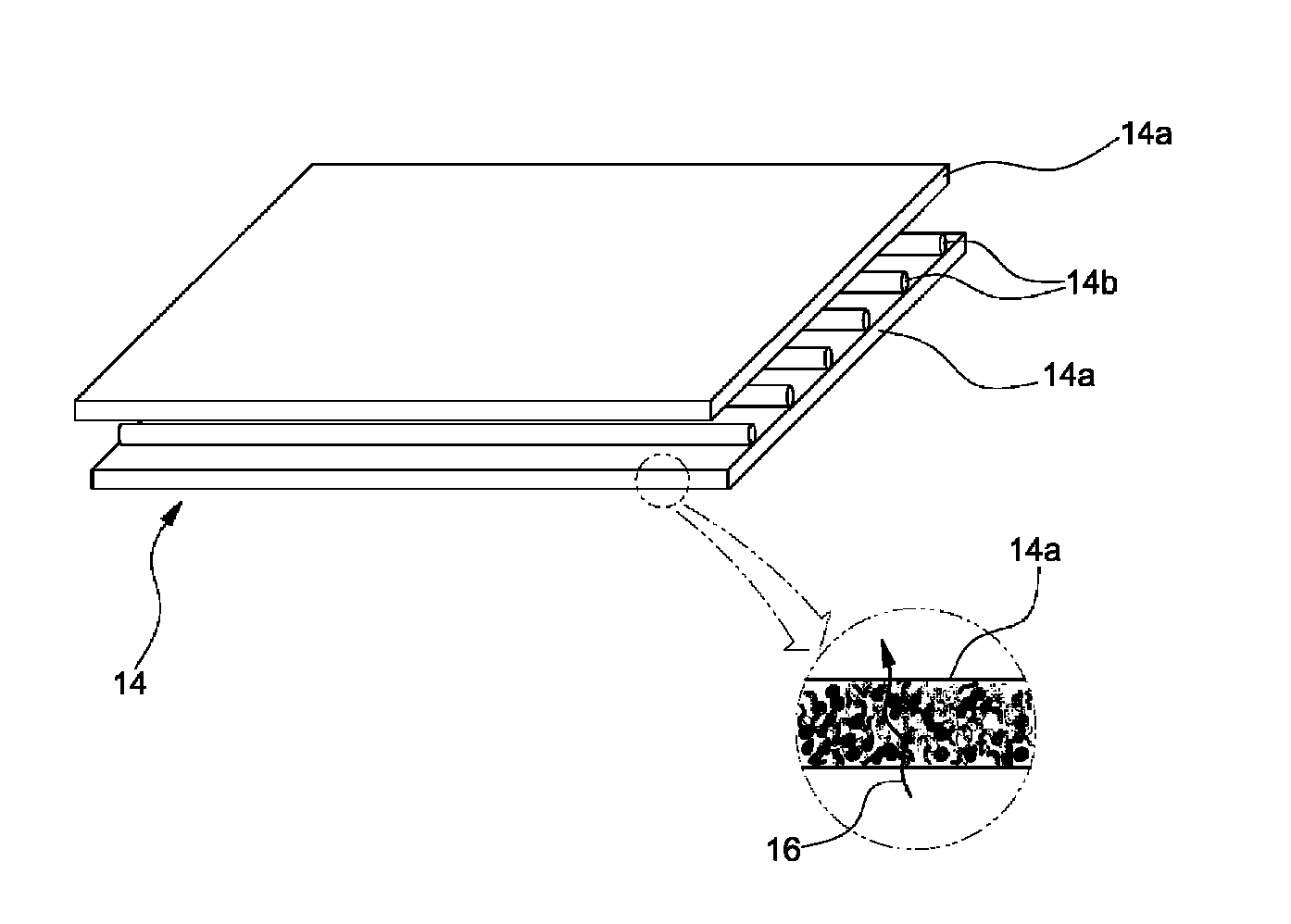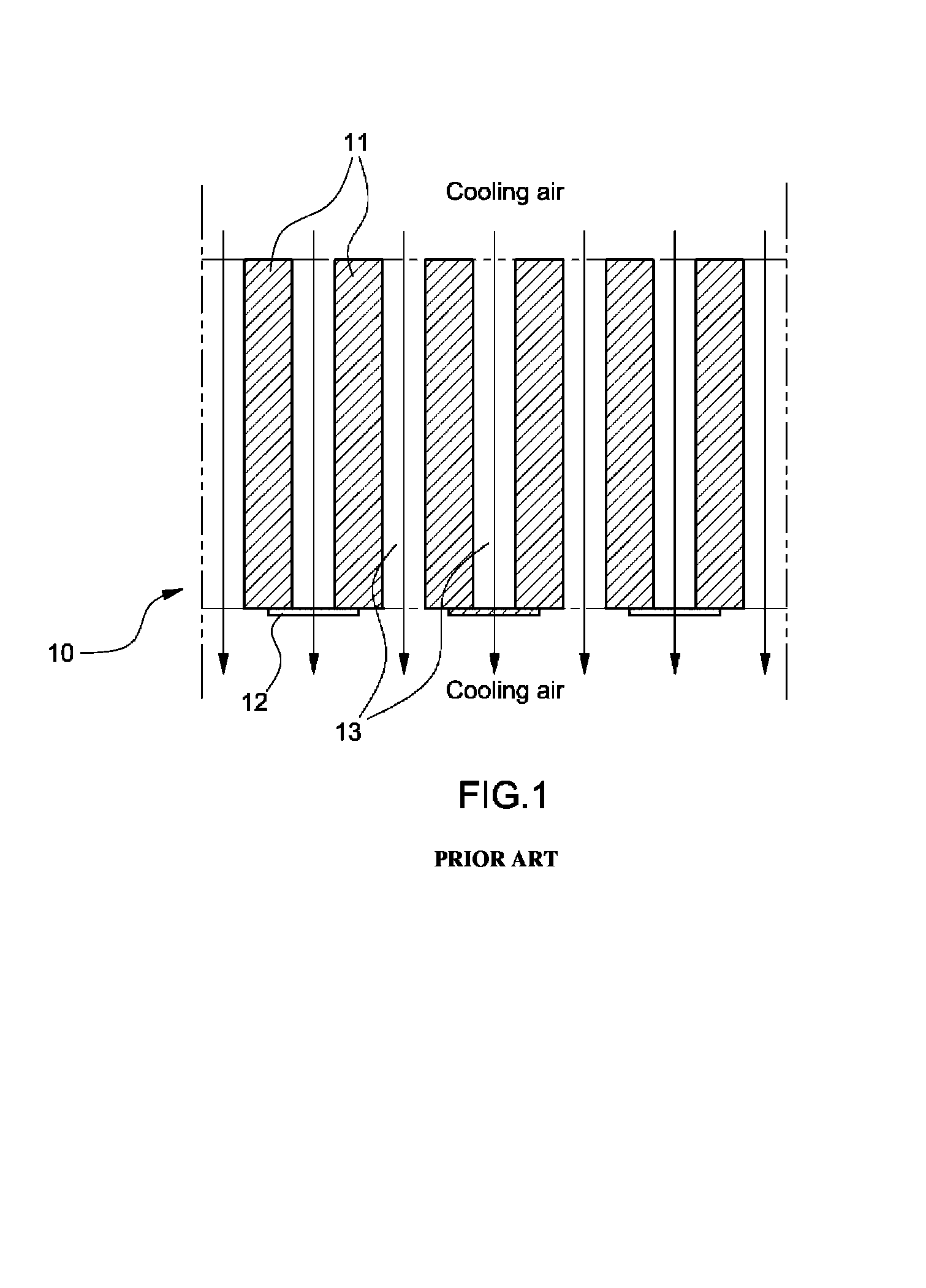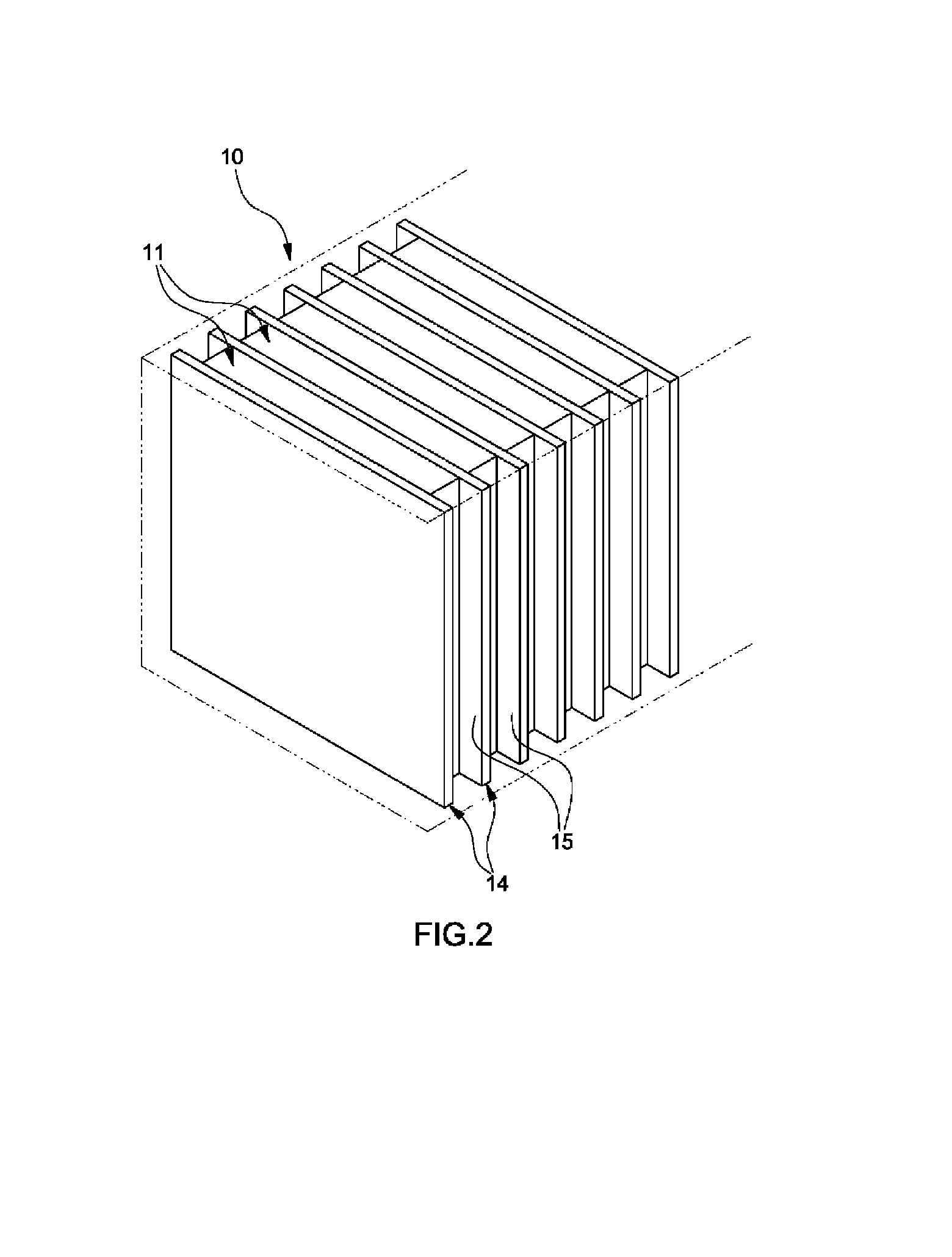Heat dissipation plate for battery cell module and battery cell module having the same
a battery cell module and heat dissipation plate technology, which is applied in the direction of cell components, lighting and heating apparatus, cell component details, etc., can solve the problems of thermal runaway, increase voltage, reduce the efficiency and stability of the battery, etc., and achieve the effect of effectively dissipating heat accumulated in the battery cells and modules
- Summary
- Abstract
- Description
- Claims
- Application Information
AI Technical Summary
Benefits of technology
Problems solved by technology
Method used
Image
Examples
example
[0083]First, composite sheets, which are to form top and bottom outer layer portions, were prepared. Here, styrene-ethylene-butylene-styrene (SEBS) was used as a matrix resin of the composite sheet, and 40 wt % of graphite with respect to the total weight of the composite sheet was filled in the SEBS, followed by compression and injection. Moreover, carbon fibers to be inserted into the composite sheets of two outer layer portions were surface-treated using oxygen plasma to increase the interfacial adhesion between the resin of the composite sheet and the carbon fibers. For the oxygen plasma surface treatment of the carbon fibers, a 3 k carbon fiber tow was spread and passed through a plasma reactor including an RF generator (13.5 MHz) and a Pyrex glass chamber.
[0084]The treatment conditions were as follows. The pressure was maintained at 55 Pa (50 to 55 Pa is available), the flow rate of plasma was 40 sccm (standard cubic centimeter per minute, 35 to 40 sccm is available), the plas...
PUM
| Property | Measurement | Unit |
|---|---|---|
| operating voltage | aaaaa | aaaaa |
| thickness | aaaaa | aaaaa |
| thickness | aaaaa | aaaaa |
Abstract
Description
Claims
Application Information
 Login to View More
Login to View More - R&D
- Intellectual Property
- Life Sciences
- Materials
- Tech Scout
- Unparalleled Data Quality
- Higher Quality Content
- 60% Fewer Hallucinations
Browse by: Latest US Patents, China's latest patents, Technical Efficacy Thesaurus, Application Domain, Technology Topic, Popular Technical Reports.
© 2025 PatSnap. All rights reserved.Legal|Privacy policy|Modern Slavery Act Transparency Statement|Sitemap|About US| Contact US: help@patsnap.com



